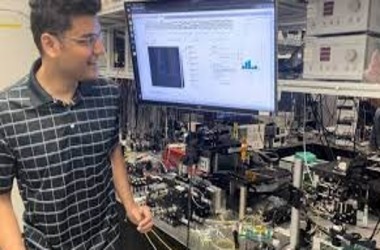 Verifying transactions and adding new digital currency to the blockchain are both steps in the mining process for cryptocurrencies like Bitcoin. But it’s not cheap; it may use up to 1% of global energy in the process. As the use of cryptocurrencies and blockchain-based apps continues to grow, it is expected that this energy usage will climb even higher.
Verifying transactions and adding new digital currency to the blockchain are both steps in the mining process for cryptocurrencies like Bitcoin. But it’s not cheap; it may use up to 1% of global energy in the process. As the use of cryptocurrencies and blockchain-based apps continues to grow, it is expected that this energy usage will climb even higher.
Cryptocurrencies are decentralized digital currencies that use encryption methods. As such, they may be used as a substitute to traditional fiat currencies. The underlying technology of these digital currencies is blockchain, a secure and irreversible digital record. Changing or compromising crucial data like financial transactions is quite difficult, if not impossible.
“At present,” writes Sunil Pai, “cryptocurrency mining is available only to those who have access to energy at prices below $0.05 per kilowatt-hour.”
An innovative light-based processing system has been devised by researchers, drastically reducing the amount of energy needed for Bitcoin mining. This game-changing development opens the door for low-energy optical processing and revolutionary photonic blockchain technology that might democratize access to cryptocurrencies.
“Our low-energy chips will allow people from all over the world to participate profitably in cryptocurrency mining,” the authors write, adding that “they could also be used for applications beyond cryptocurrency, such as securely transferring data for medical records, smart contracts, and voting.”
In a paper published in Optica, David A.B. Miller, Shanhui Fan, and Olav Solgaard of Stanford University introduced their novel LightHash technique, which uses a photonic integrated circuit to create a photonic blockchain. Scientists believe that with further development, this method will be 10 times more energy efficient than the most cutting-edge digital electronic processors on the market today. Rising concerns about the environmental impact of cryptocurrency mining have led several major platforms, like Ethereum, to use experimental and possibly insecure methods of lowering their energy consumption.
To develop a more eco-friendly and secure alternative, Pai and his colleagues have employed silicon photonics to lower the energy needs of Bitcoin networks without compromising on safety. LightHash is a major improvement over their prior solution, HeavyHash, which enables them to support Optical Bitcoin and Kaspa networks. Hash functions like SHA256 and Heavyhash are required for the safe creation, usage, and functioning of Bitcoin’s decentralized computer network. These operations, which convert several input values to a single output number, account for a large portion of Bitcoin’s overall energy use.
A silicon photonic device with 66 programmable interferometers was used to adapt Heavyhash for use in a recent investigation. Because of this adjustment, we made great strides. Lighthash relies heavily on matrix multiplications, and this novel technology makes it possible to conduct these operations optically while using little energy. The researchers constructed optical equipment in order to test the feasibility of using LightHash for matrix multiplication by mining. By altering the heating components and projecting the grating areas onto an infrared camera, they were able to manipulate and watch the light’s propagation. The team also developed an error-correcting algorithm and defined parameters for gauging the scalability of the technique.
The study’s lead author, Pai, claims that the results prove “LightHash can be computed on a large scale using current silicon photonic chip technology.”
In essence, we have developed a means through which analog optical circuits may do multiplications with negligible power consumption and high enough precision to be used in modern cryptographic protocols. LightHash has to be upgraded to enable 64 inputs and outputs before it can be shown to be better than digital equivalents. The team is also working on low-power electromechanical tuning components and energy-saving converters for efficient optical-to-electrical signal conversion. According to Pai, it would be fascinating to see how Bitcoin technology develops and how photonics might help decentralized ledgers become more widely used in modern life.








